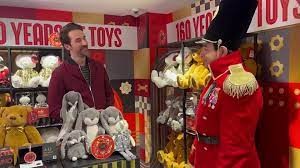Kidults, who tend to spend more on toys, have a great fondness for cartoons, superheroes and collectibles that remind them of their childhood. They buy merchandise such as action figures, Lego sets and dolls that might typically be considered “for kids.” However, in recent years, toy makers have created product lines just for these consumers, realizing that demand is high for this generation of adults who still want to have fun.
“The definition of adulthood has definitely evolved,” said Jeremy Padawer, chief brand officer at toy company Jazwares. “What it used to mean, to be an adult, was to be a very upstanding, serious member of society. And to do that you had to demonstrate it intellectually, emotionally, in every other single way.”
“Now we feel a lot more free to express our fandom as a part of our adulthood,” he said.
In the ’70s and ’80s, the toy business began to shift away from being an industry that was just about the next innovative item and embraced creating more products based on entertainment franchises. To be sure, there were toys based on movies and TV shows prior to this time, but this is when the trend kicked into high gear.
“In 1977, ‘Star Wars’ launches, and you started seeing a lot more licensed product at retail, where we were celebrating our fandom with with toys and collectibles,” Padawer said.
This included non-toy merchandise such as bedsheets, crockery and clothing.
“At the time, the intended recipient was almost all kids,” he explained. “But those children that were born in the ’70s and ’80s were really the first generation that had this much licensing and this much product that was available for them to demonstrably attached to. And it’s not a big surprise, then that those kids in their 30s and 40s, that they continue to demonstrate that.”
This kidulting trend started to rise in prominence around a decade ago, as superhero movies and comic book culture exploded into the mainstream. It became more consequential to the bottom lines of toy companies in the last five years, said James Zahn, editor in chief of “The Toy Book” and senior editor of “The Toy Insider.”
Toy manufacturers such as Lego embraced these consumers and created lines, often tied to nostalgic entertainment properties, just for this cohort. Hasbro’s Black Series for action figures, is a prime example of this, tapping into the desire for high-quality Star Wars and Marvel collectibles. Even Mattel has lines from Barbie and Hot Wheels that are designed specifically for this group of buyers.
Toy companies have even begun creating their own television and movie content in order to support toy lines. Mattel launched its own internal movie company and is set to release “Barbie” in July 2023 and Hasbro bought eOne and will set “Dungeons & Dragons: Honor Among Thieves” in theaters in March.
These films are not designed for young kids, instead catering to this older group of toy-loving consumers.
Other brands, such as Funko, have always catered toward adult collectors who are in tune with their inner kid.


